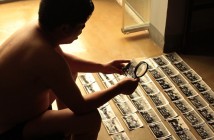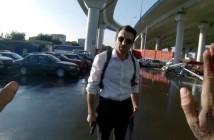
Editor’s Note: The following review is part of our coverage of TIFF’s The Crisis of the Real: New Chinese Independent Documentaries. For more information, visit tiff.net and follow TIFF on Twitter at @TIFF_NET.
As the title of the series implies, the ‘real’ in these handful of recent independent Chinese documentary films is not clear cut or concise; it is complex and contested. In fact, these films identify an overarching manifestation of this crisis as the conflict between personal truths/perspectives and official records — or lack thereof.
Without fail, these films address the intricate interplay between memory and history — nay, memory as an oft-overlooked facet of history — and the necessary role of the camera as both an arbiter and bridge between memory and history. Personalising history and politicising memory, the act of remembering is an act both personal and political, not just one or the other, whether one likes it or not.
Remembering in the present what had been before or what transpired — and how it impinges on the present — cuts across these films in a startling way. In fact, strongly uniting these films is the mode of elegy: for what once had been and/or what is now lost, as a way of life or (sense of) community. Zou Yueping’s Satiated Village (2011) is a nod to cinéma vérité by inviting the villagers whom she had filmed for a previous work addressing personal experiences of the Great Leap Forward famine and getting their (unexpected) feedback; similarly, Hu Jie’s Spark (2014) collects reminiscences of the famine but from the alternative perspective of faculty/students who published articles recording and analysing what was happening in the nation in an underground magazine; Gu Tao’s character study of Wei Jia in The Last Moose of Aoluguya (2013) ultimately captures his deeply marginalised and therefore disappearing ethnic community of the Ewenki and ways of coping with being uprooted; Ai Weiwei’s studio’s Ping’an Yueqing (2011), which kicks off the series, conducts an unofficial investigation of the death of village leader/activist Qian Yunhui, in the course of which the question of whose ‘real’ and whose truths emerges as a highly emotional disputed space that cannot be ignored.
Time and again, the settings of these films are (remote) village communities and the cultures of hardship that remains inherited from the past, as in Satiated Village, The Last Moose of Aoguluya, Ping’an Yueqing, and Xu Tong’s Cut Out the Eyes (2014). Xu’s latest is also a character study, of Er Housheng, an itinerant folk-opera performer specialising in the traditional song of er ren tai and touring villages of inner Mongolia.
The two most personal films in the degree to which they use first-person address and inscribe themselves in their images are Satiated Village and Yong Pingdao’s video diary The River of Life (2014). Yet they are also elegiac, in the sense that their underlying subject is their grandmothers’ lives. Simultaneously personal and collaborative, Zhu Rikun’s The Dossier (2014) presents Tibetan writer-activist Tsering Woeser moving between reading from her covert government dossier (obtained practically by chance) and reflecting on her personal trajectory and activism; the result is a staged encounter of diverging representations of Woeser that is no less elegiac, as her performance and remembering is part of the larger movement of addressing Chinese policies against ethnic minorities.
The exception to these largely elegiac and contested perspectives of the real is the one-shot documentary from the Harvard Film Study Center + Sensory Ethnography Lab, People’s Park (2012, JP Sniadecki/Libby Cohn). A thoughtful real-time look at a park in Chengdu that is no less striking in its different revelation of the real, namely, leisure. Within the context of the series, People’s Park is distinguished not for sticking out like a sore thumb formally and thematically but for betraying the unevenness of the country’s ongoing socioeconomic leaps and bounds. In the process of these leaps and bounds, what/who is falling through the spaces between, getting left behind, being forgotten or sacrificed?
These films, individually and collectively, grapple with such a question and are undeniably driven by it as motivation for the making of them. The ‘crisis of the real,’ then, is less a description of the films than the social and/or political urgency with which the filmmakers find themselves confronted as both social actors and witnesses of the past-present.



